MISE EN ABYME
BUTTERFLY MAP
NEW COMIC DAY
Will you Marry Me?
DOUBLES
nothing _____ can stay
Carrier Pigeon
Moving towards Home:
Art for Palestine in New York City 1989 & 2024
The Seeker & The Imposter
OUR HOUSE
YOU DON’T
MATTER GIVEUP
WHAT A FOOL BELIEVES
FLOATERS
Sweet Salvation
siding with things
Medium Rare
MOULT
Several Species of Small Furry Animals Gathered Together in a Cave and Grooving With a Pict
WHO IS PLUTO
Fractal Noise
Flame Casts No Shadow
TOO MUCH LOVE WILL KILL YOU
The Last City Museum in NY
Vol 2. A1 Landscape
Vol 1. 8F Figure
BUTTERFLY MAP
NEW COMIC DAY
Will you Marry Me?
DOUBLES
nothing _____ can stay
Carrier Pigeon
Moving towards Home:
Art for Palestine in New York City 1989 & 2024
The Seeker & The Imposter
OUR HOUSE
YOU DON’T
MATTER GIVEUP
WHAT A FOOL BELIEVES
FLOATERS
Sweet Salvation
siding with things
Medium Rare
MOULT
Several Species of Small Furry Animals Gathered Together in a Cave and Grooving With a Pict
WHO IS PLUTO
Fractal Noise
Flame Casts No Shadow
TOO MUCH LOVE WILL KILL YOU
The Last City Museum in NY
Vol 2. A1 Landscape
Vol 1. 8F Figure
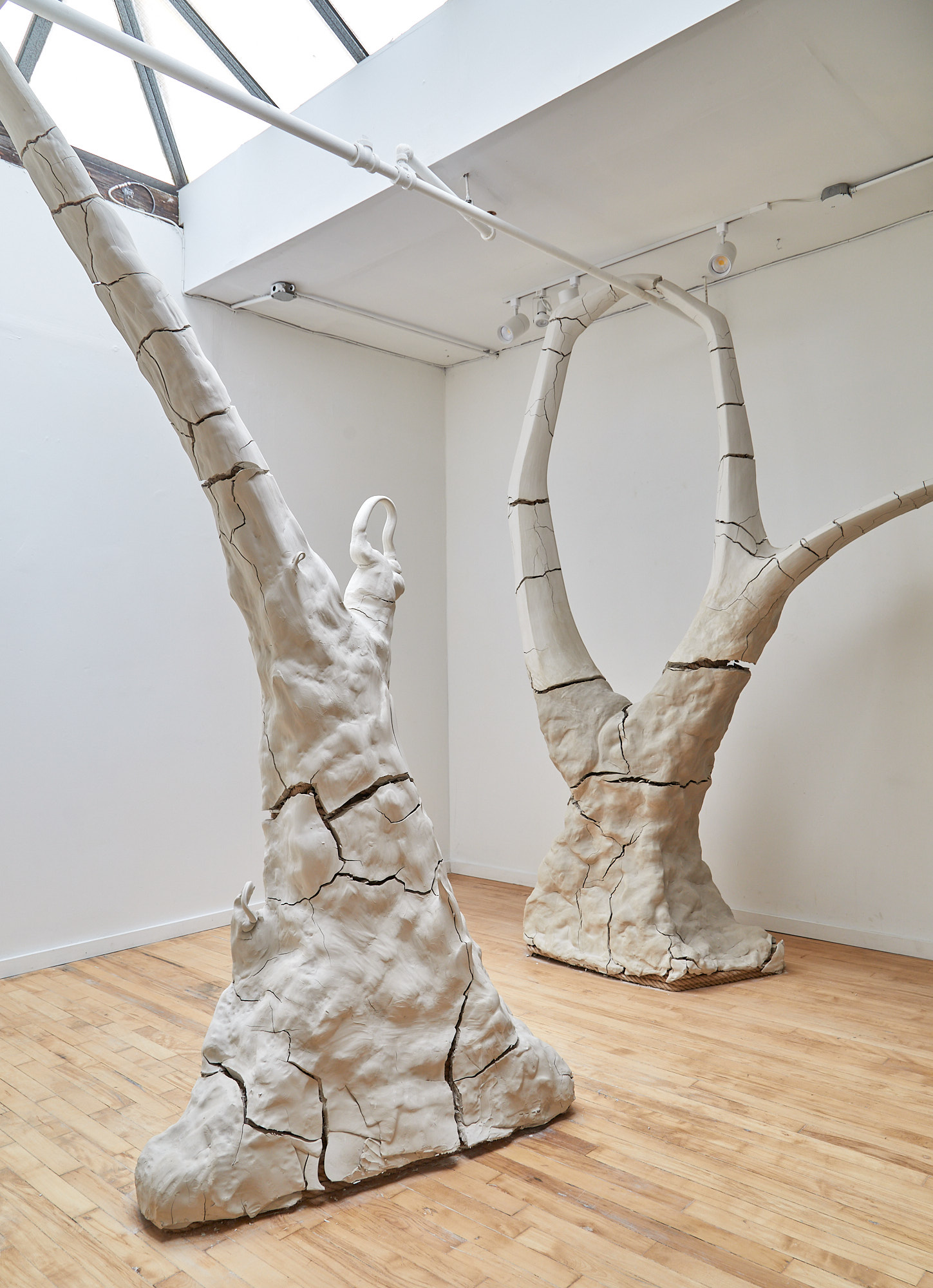
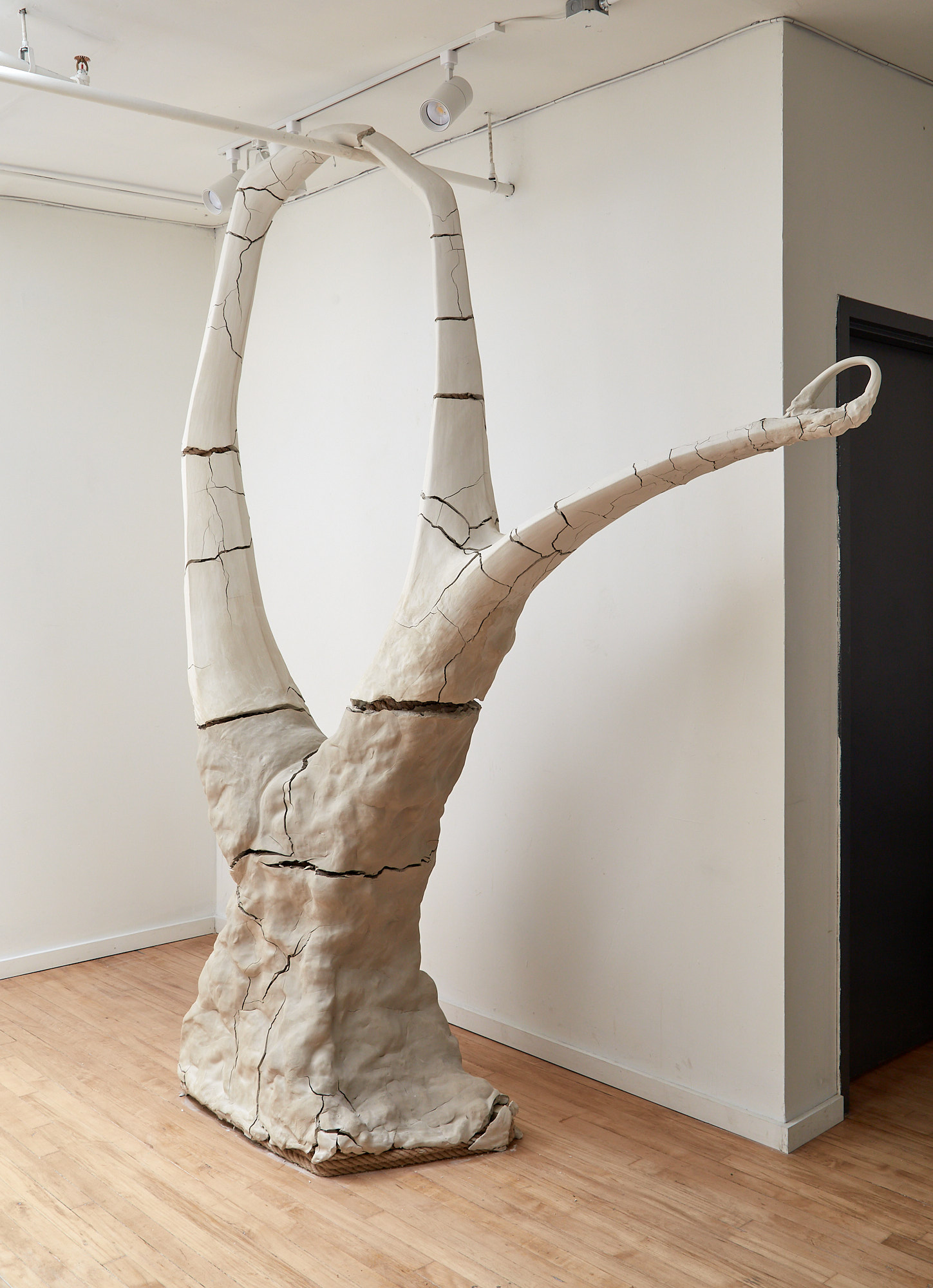
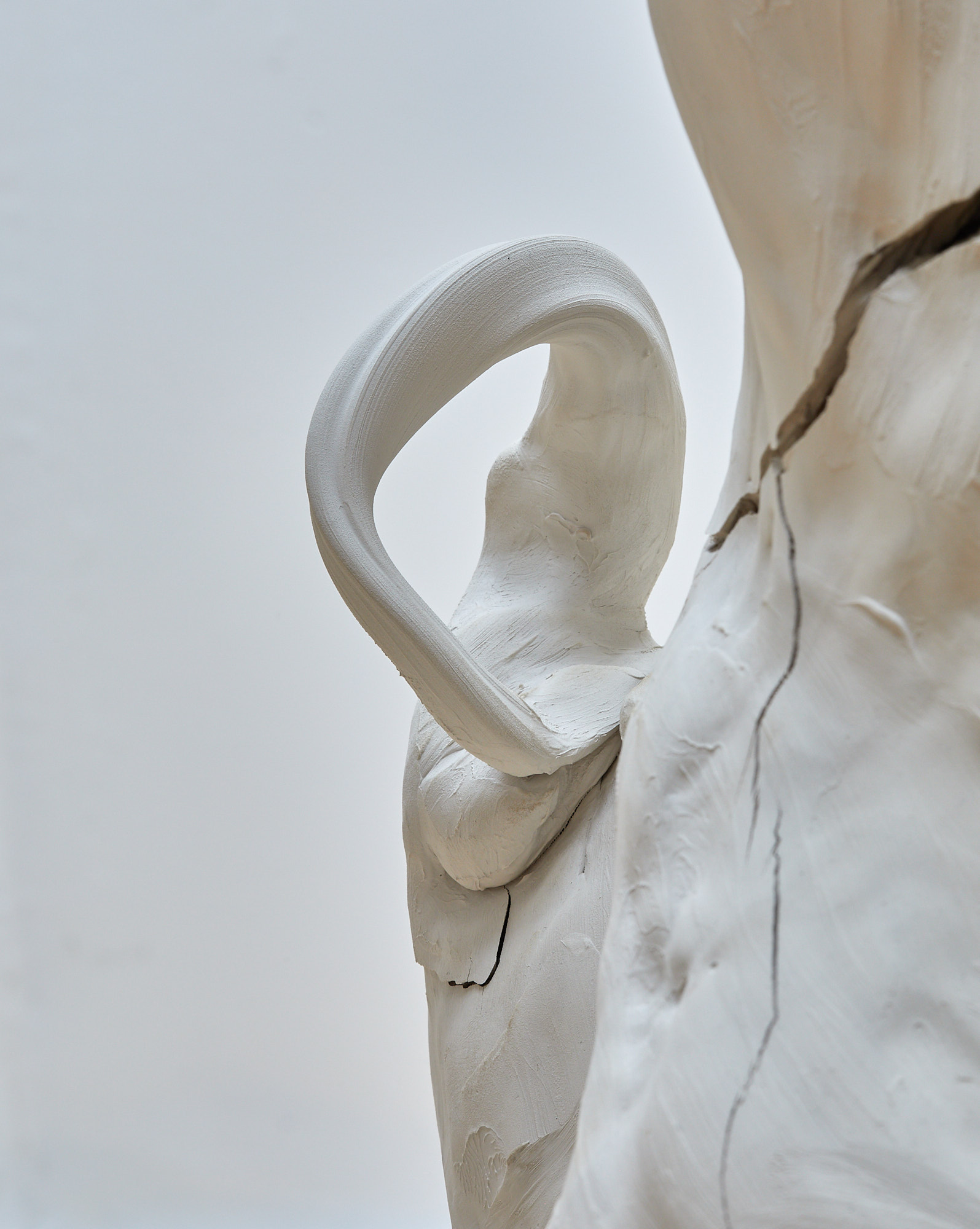

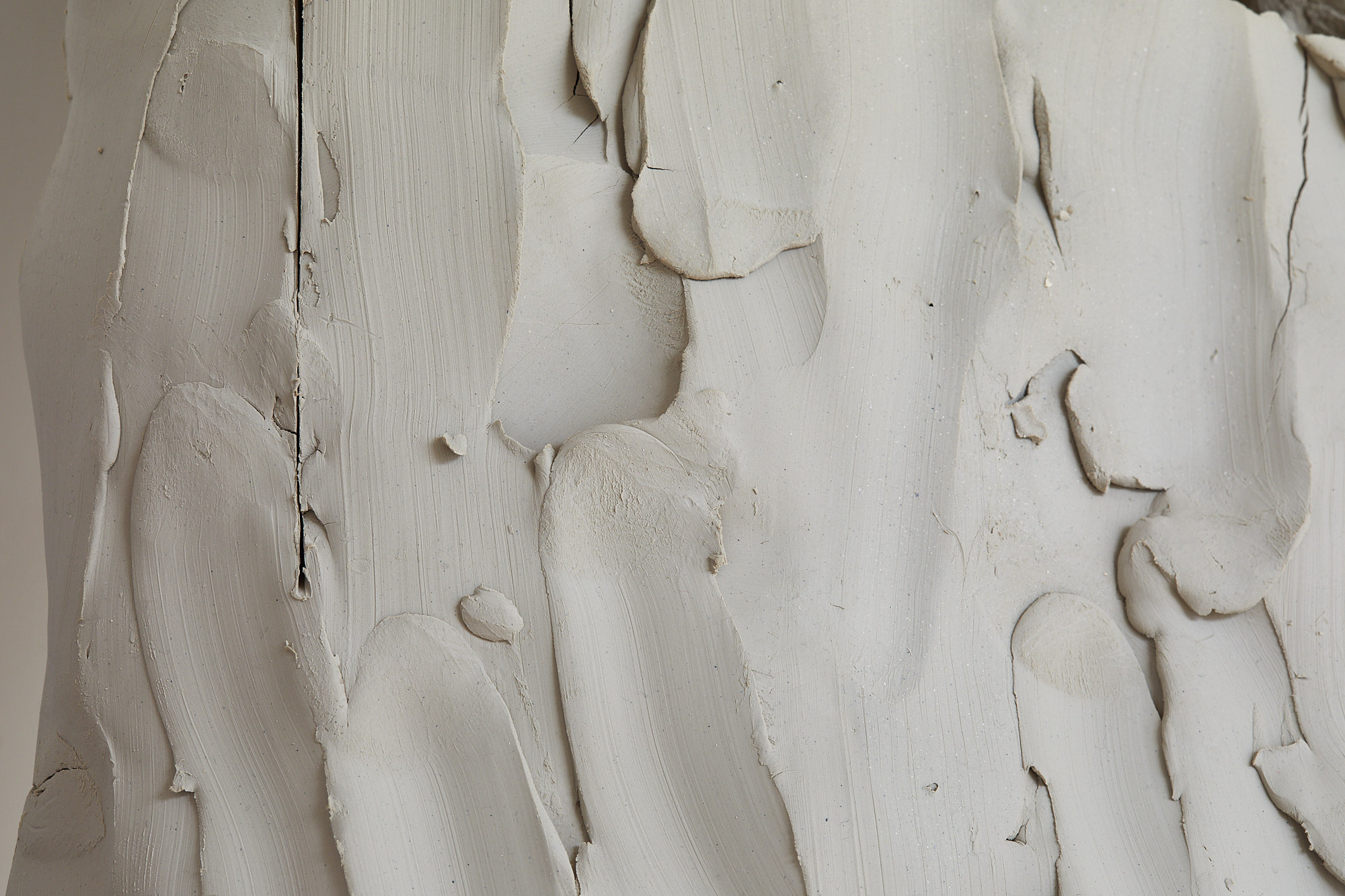
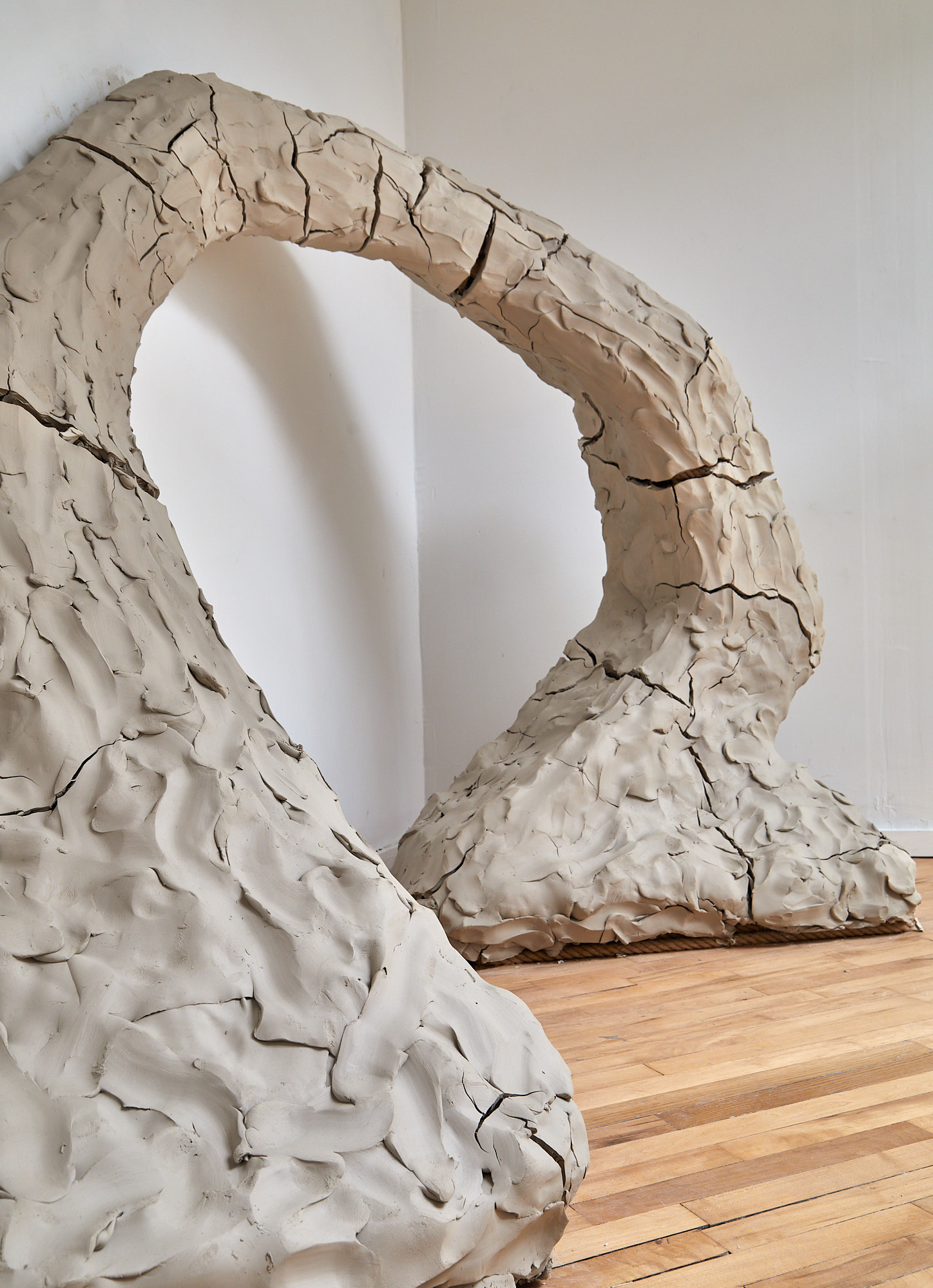
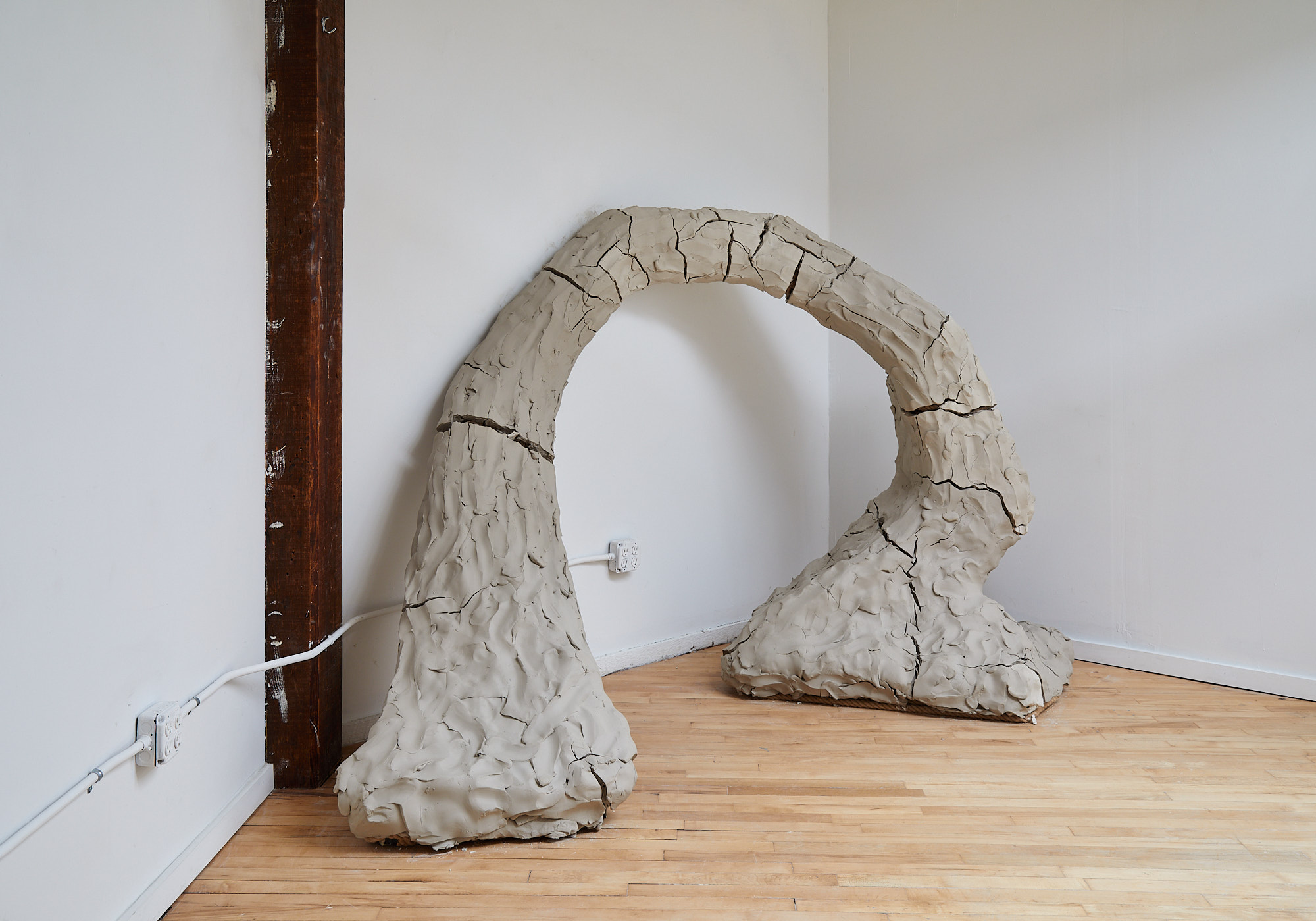
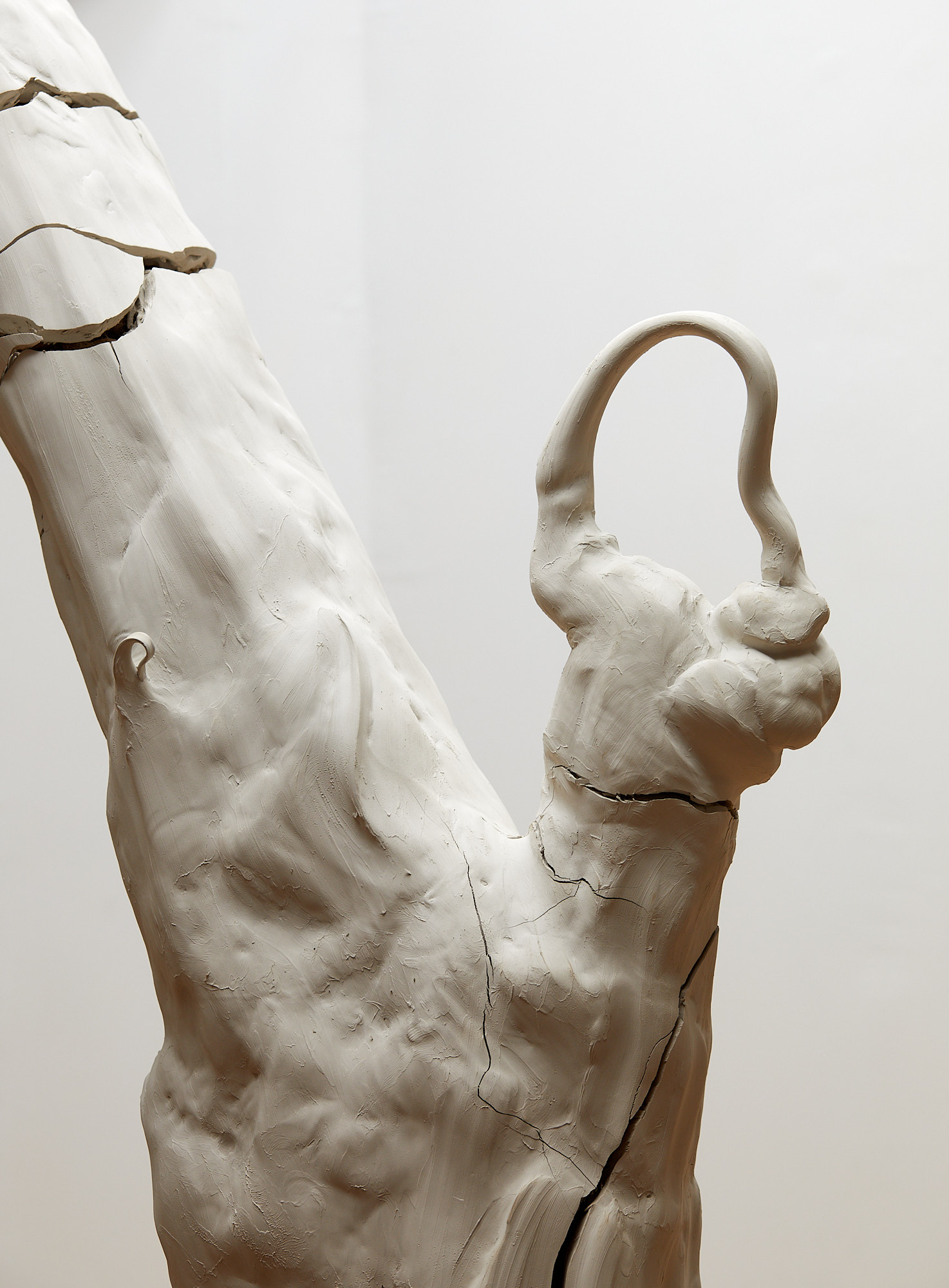
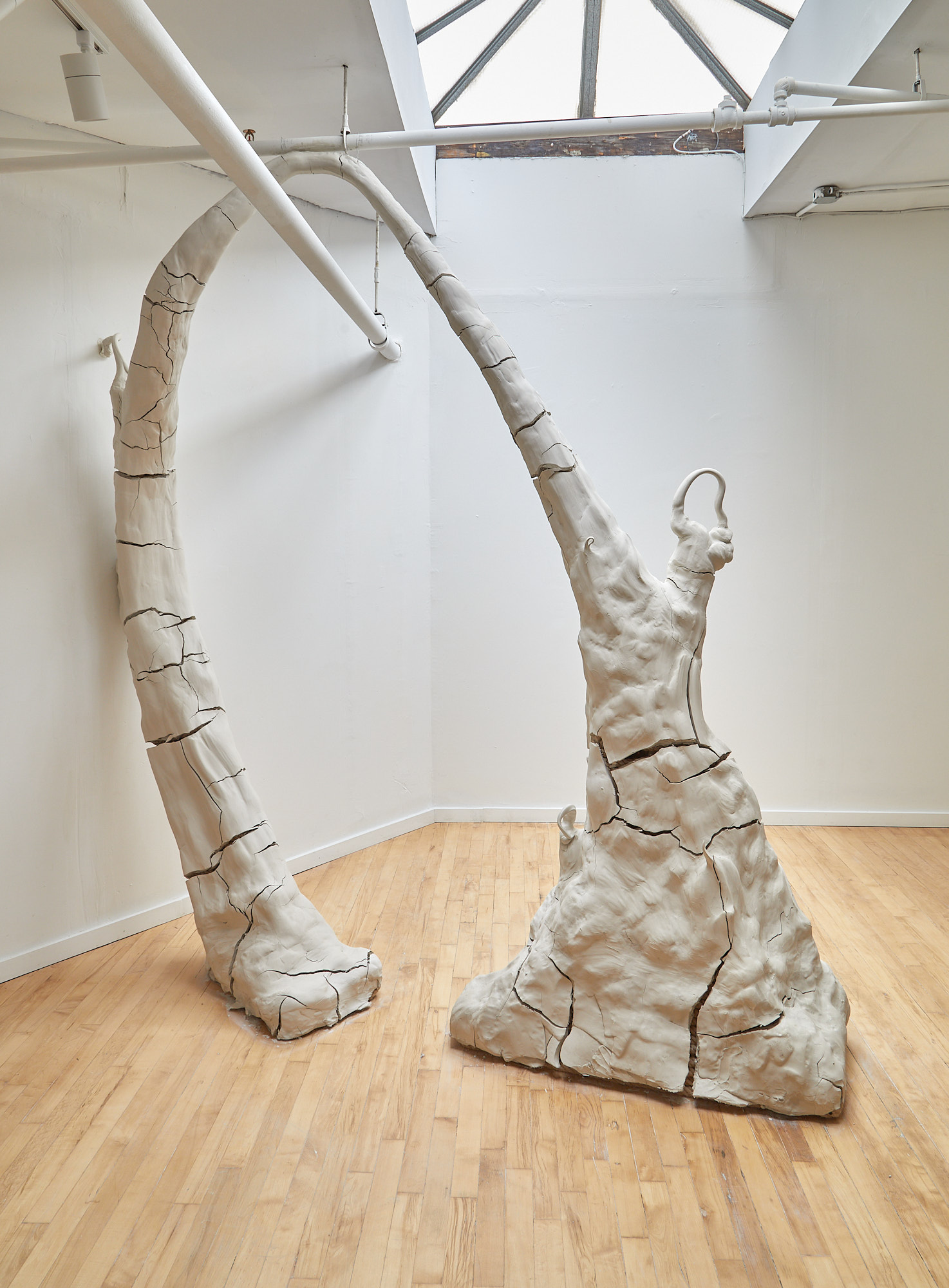
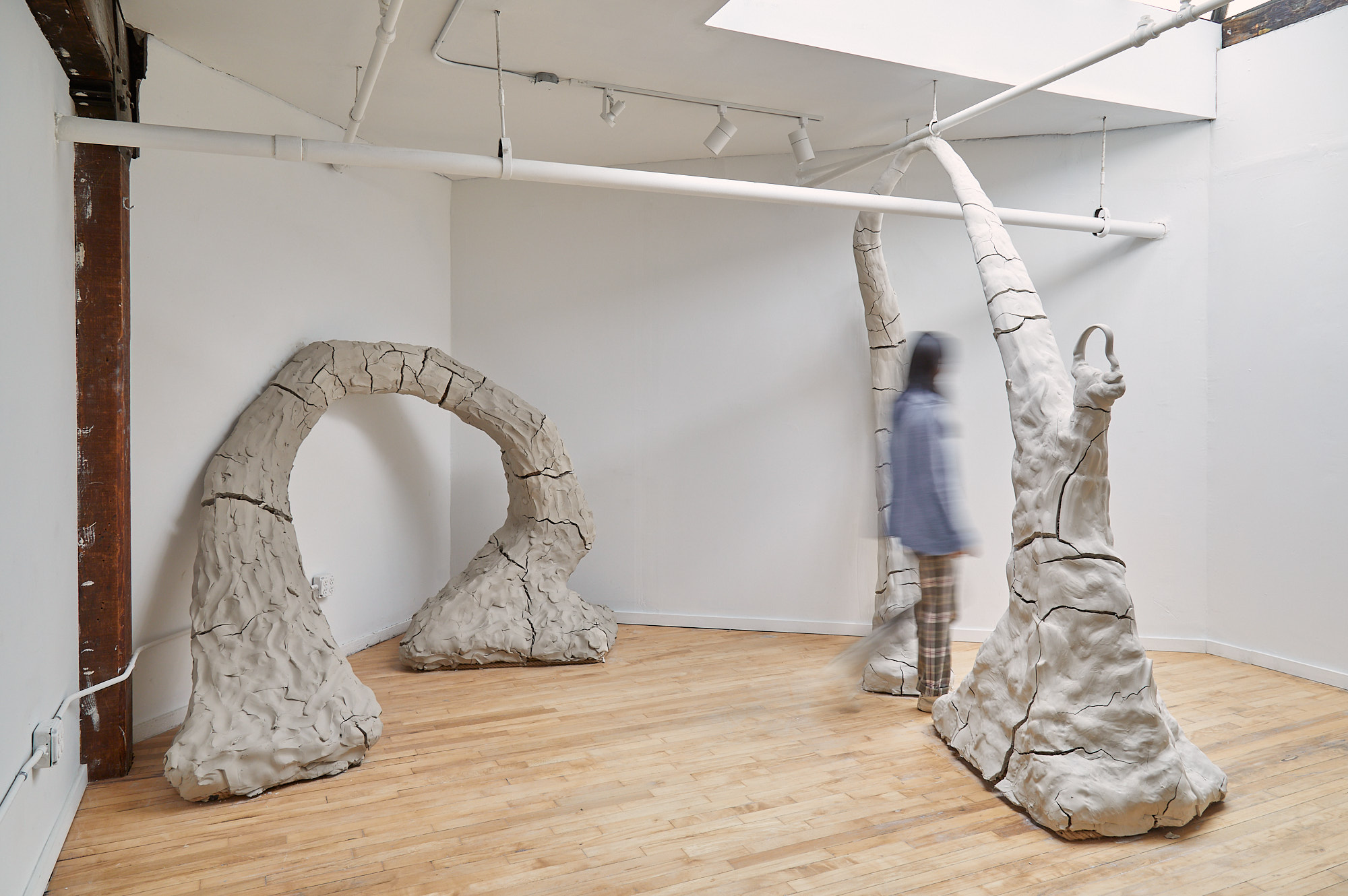
MOULT
02.24 – 04.02.2023
Hae Won Sohn
Hae Won Sohn is an expert ceramicist, trained in many techniques of building, molding and casting. She has previously worked as a ceramics professor and currently teaches at Greenwich House Pottery. But when she is in her studio, she is interested in subversive forms of sculpture. She works with both precision and intuition by tapping into many ways of doing, devising new techniques while simultaneously responding with the embodied knowledge she has honed for over a decade. In her practice, she is unafraid of literally breaking the mold and reorienting its parts; she is comfortable with experimenting and fusing techniques from different centuries, and she is critical of mass production and replication within the arts. These alterations in concept and craft leave ample room for reinterpretation and reimagination. Through her continuous practice of making these sculptures, she broadens one’s perception of what constitutes ceramic art and design. She proposes new ideas that question ‘what is a technique?’ and ‘who is a ceramicist?’.
‘Subtitled NYC’ is an artist-run space located on the second floor of a shared multi-use building in Greenpoint, Brooklyn. Jaejoon Jang who is also an artist and runs the space curated many exhibitions in the space. In my interpretation, he views the space itself as a thought in progress. He is unburdened with sharing a curated space as an outcome or a well-tied story. He is instead interested in creating many suspended vortexes of concepts that can be critically and constructively engaged with by the viewers. When Jaejoon and Hae Won met to discuss this project, she proposed a set of large hand-pulled handles that weaves together architectural elements of the space. Hand pulling is a traditional clay technique that uses a large lump of clay with a wet hand to create a handle form. With the current exhibition ‘Moult’, Hae Won experiments with building vs creating, i.e. discovering the process while it’s happening vs planning the details for an expected outcome. She has made a series of large clay bodies that loop over exposed pipes, used angled walls for support and add new edges in the room. These new sculptures are monumental in scale, investigating balance, weight and thresholds; giving Jaejoon more vortexes to play with.
Handles are attachment to objects for use and comfort. They are the site of interaction where bodies and the tool intersect. In the scope of industrial design, handles are crafted with efficiency for varied purposes keeping in mind the different shapes of bodies. They can have many features and qualities such as being small, soft, hidden, and textured. These details allow for specific engagements and create space for a critical analysis. But when simplified, the handle is a place to hold, a secondary thought, a must-have for easy use. It lives a life between an expected shape and extreme functionality, seldom as sculpture. In ‘Moult’, Hae Won takes the object of the handle as an art form in itself, challenging the fixed norms within the ceramics discipline that she has often attempted to expand and redefine. She surveys the handle in this installation by drawing spatial forms that visually represent it, using hand pulling technique, and bringing focus to the handle as art. She has made these intricate objects by creating a wooden armature, wrapping it around with an inch thick rope and adding precise layers of clay on top to achieve the desired form. In time, she knows that the surface of her clay bodies are going to crack and fall. They will have thick walls, uneven edges and an imprint of jute rope on the inside. She is excited to see what falls and what stays and what breaks. These are new objects and offcuts that she is planning to preserve and think about.
“To study is not to consume ideas, but to create and re-create them.” – Paolo Freire, “The Act of Study,” 1985
Hae Won creates her sculptures using traditional techniques of mold making and slip casting. These techniques emerge from many distinct origins around the world, adding dimension and plurality to the history of ceramic art and design. The development of these techniques came from a mixture of necessity, curiosity, and creativity. Slip casting was developed in Europe in the 17th century for the intention of replication, mass production and possibly accessibility, whereas in the ancient Sicán culture of Peru the slip casting method was used to create pipes that produced unique whistling sounds. These vessels were crafted with varying wall thickness, inner air chamber arrangements, and volumetric proportions to engineer the quality of sound they produced. These origin stories afford diversity to the knowledge of the technique as it is practiced in the present day, and bring to question: why shouldn’t these stories and techniques continue developing to suite new desires and impulses.
Hae Won uses techniques as sites of intervention. She manipulates them to see what occurs and responds to those occurrences in real time. In the past 6 years, she has developed many divergent processes that intersect the traditional technique at varying stages. Many times, she uses ‘the mold’ as an artifact to challenge and recontexualise the discourse surrounding what constitutes a ‘discard’ or ‘cast away’ in the art-making process. In previous works, Hae Won has intentionally worked in series to show the progression in form development. She achieved this by repeatedly attaching a piece of cast mold, which served as a secondary body, onto the original form. Through this method, she destabilized the notion of having one outcome from a technique and reaffirmed how approaches to making can be individualised.
Technique is commonly defined as a way of carrying out a particular task, especially the execution or performance of an artistic work or a scientific procedure. But this definition lacks the dimension of time. A technique has a relationship to learning and the arc of becoming efficient, influencing how it changes from person to person. While explaining things around the kitchen, my mother always tried to pass on knowledge from body to body. She says ‘look at me’, ‘do you see what I did’, ‘it is important for you to observe’ and I try to absorb it all. With my experiences, I think about technique as an art form in itself. It is many occurrences, many practices, many perspectives over a period of time that shape a technique. A pattern of tasks that enable an act is closer to production than it is to technique, and here I want to broaden the distance between the two concepts. I believe that this is what Hae Won attempts to pursue. Rather than being limited by a single technique, she incorporates multiple elements simultaneously and in experimental proportions, constantly exploring the varied meanings behind the act of creation.
- Swati Piparsania, Assistant Professor of Industrial Design, Pratt Institute
All photos courtesy of Subtitled NYC, New York